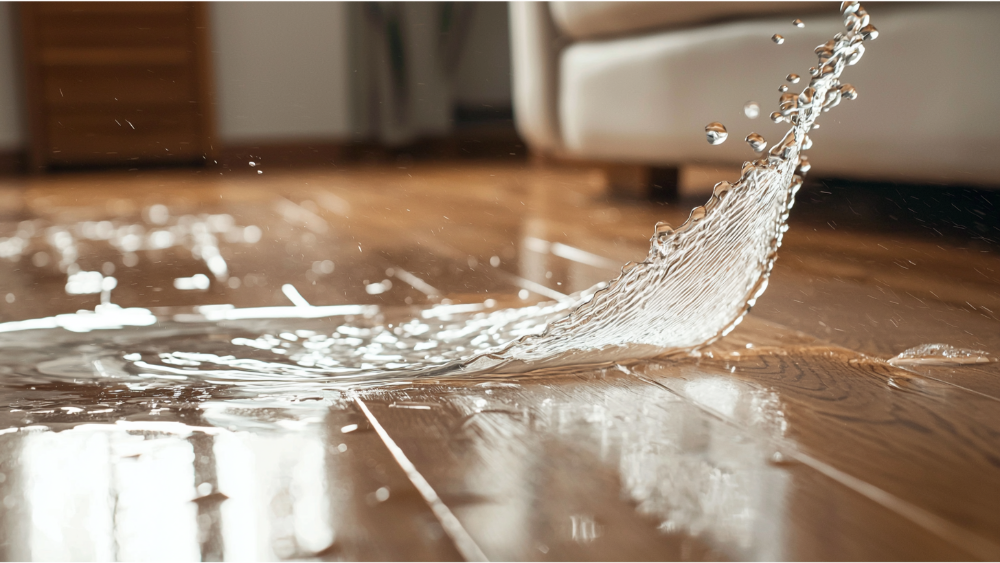Laminate flooring is a popular choice for its affordability and stylish appearance, but many homeowners often wonder about its resistance to water. While laminate is designed to be durable, its waterproof capabilities can vary based on the product and installation quality. Understanding its water resistance is essential for making an informed decision, especially for moisture-prone areas like kitchens or bathrooms.
Is Laminate Flooring Truly Waterproof?
Most laminate flooring is not completely waterproof, though some options are water-resistant to a certain degree. Traditional laminate consists of a fiberboard core, which can absorb water if exposed to excessive moisture, leading to swelling and damage. However, newer advancements in laminate technology have resulted in water-resistant and even waterproof varieties, often treated with special coatings and sealants that allow them to withstand moisture for longer periods. It’s important to note that even waterproof laminate floors have limitations and may not endure standing water or extreme conditions.
Understanding Waterproof and Water-Resistant Laminate Flooring
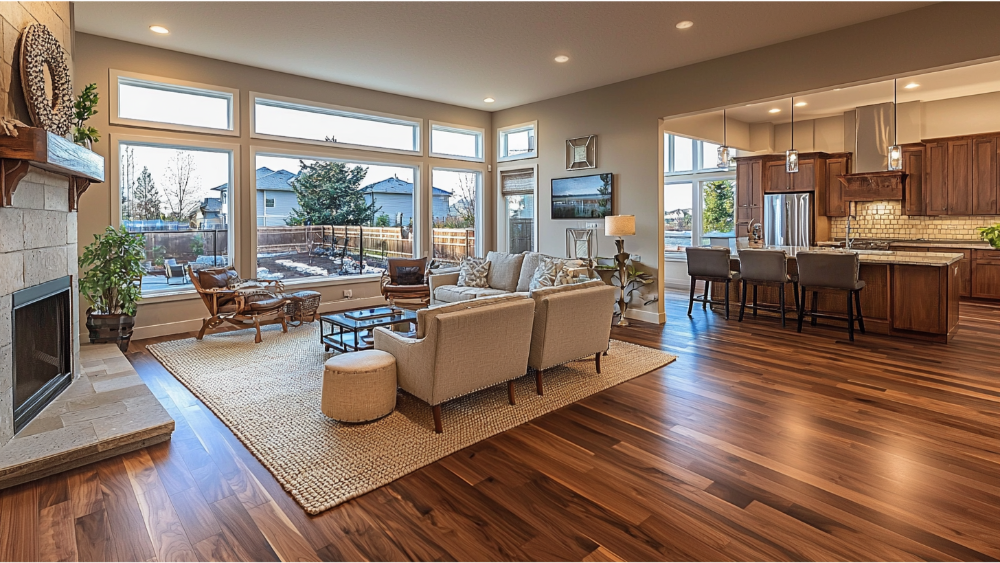
While traditional laminate flooring is not completely waterproof, there are options available that offer enhanced water resistance. Water-resistant laminate flooring is specifically engineered to handle occasional spills and moisture. These products typically feature a protective surface layer and tight seams to minimize water absorption, making them suitable for areas with light moisture exposure.
If you are looking for a more robust option, waterproof laminate flooring is an excellent choice. These advanced products are designed with specialized cores that prevent water from seeping through, ensuring durability even in high-moisture spaces like bathrooms or laundry rooms. When selecting laminate flooring, consider your needs and the environment where it will be installed to choose between water-resistant or waterproof options.
Differences Between Water-Resistant and Waterproof Laminate Flooring
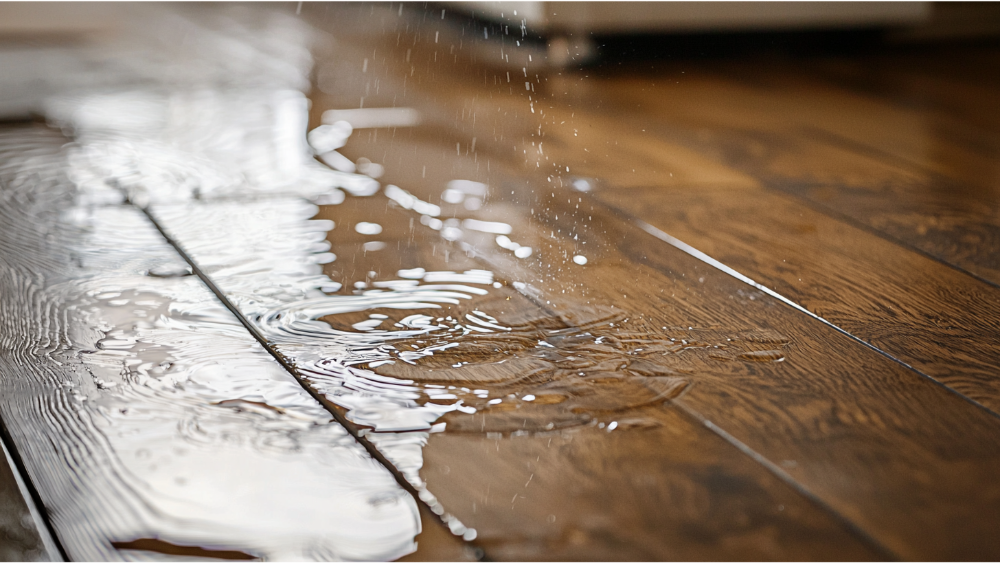
Core Composition
Water-resistant laminate flooring typically has a standard fiberboard core, which can withstand minor exposure to moisture but will swell if water seeps in over time. On the other hand, waterproof laminate flooring features a specialized core, often made from high-density materials designed to repel water completely. This makes waterproof flooring far more durable than water-resistant types in areas with frequent spills, such as kitchens or bathrooms.
Application Areas
Water-resistant laminate flooring is ideal for rooms with low to moderate moisture exposure, like living rooms or bedrooms where occasional spills can be quickly cleaned up with a mop. For high-moisture areas like bathrooms or laundry rooms, waterproof floors are better suited as they can handle prolonged exposure to water without damage. Waterproof flooring provides an alternative to other moisture-proof materials like ceramic or porcelain tiles, while still retaining the warmth and aesthetic of wood.
Ease of Maintenance
With water-resistant laminate, it’s essential to promptly mop up spills to prevent water from seeping between the seams and causing damage to the core. Waterproof laminate flooring offers greater peace of mind as its impermeable surface allows you to mop laminate flooring regularly without worrying about water damage. This convenience makes waterproof options a more practical choice for households with children or pets where accidents are more frequent.
Ways to Protect Laminate Flooring from Water Damage
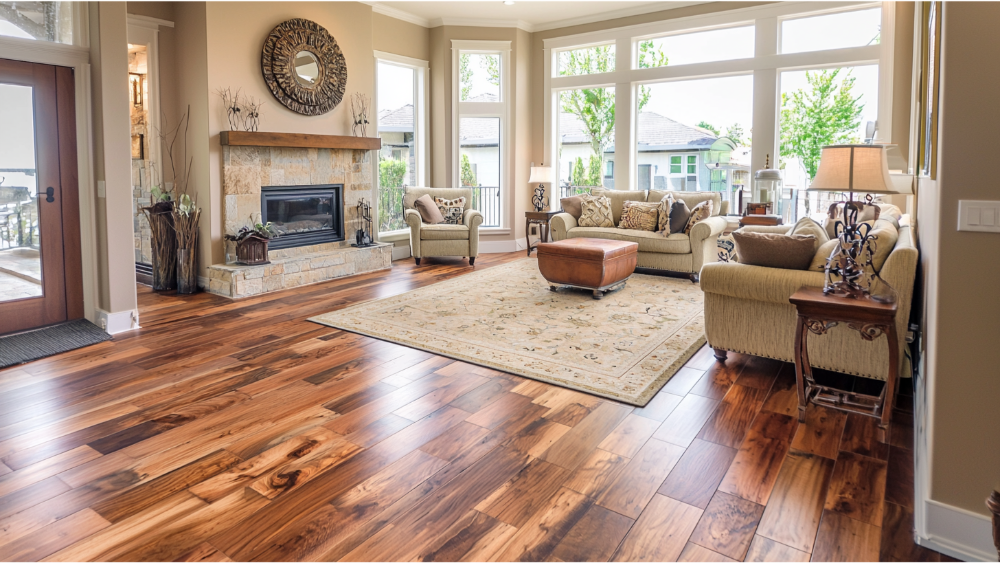
Use Area Rugs and Mats
Placing rugs and mats in high-traffic and moisture-prone areas can help protect laminate planks from water exposure. For example, using mats near entryways prevents rainwater or snow from being tracked onto the flooring. Similarly, adding rugs in areas like the kitchen can catch spills before they seep into the seams. This simple practice can extend the life of your laminate by acting as a barrier against potential water damage.
Clean Spills Immediately
Quick action is vital to prevent water from soaking into the laminate planks and damaging the core. Use a dry or slightly damp cloth to mop up spills as soon as they occur to avoid prolonged exposure. Unlike solid hardwood or vinyl flooring, laminate needs careful cleaning techniques since standing water can compromise its surface. Regularly checking for missed spills is also helpful in maintaining its condition.
Install Waterproof Underlayment
Investing in a waterproof underlayment provides an extra layer of protection by preventing moisture from seeping up from beneath the flooring. This is particularly useful in environments like basements or kitchens where the underlying surface may retain moisture. Although laminate flooring is less moisture-resistant than stone flooring, pairing it with a quality underlayment can bolster its defense against water damage significantly. This small upgrade adds to the durability and longevity of your floors.
Apply Sealant to Joints
Sealing the edges of laminate planks can prevent water from penetrating into the seams, which are the most vulnerable parts of the floor. Special sealants designed for laminate flooring can create a barrier that locks out moisture effectively. Although this step won’t make your floors completely waterproof like vinyl flooring, it’s a practical way to enhance their water resistance. Revisiting the sealant application periodically is also recommended for long-term protection.
Control Humidity Levels
High indoor humidity can cause laminate planks to swell over time, leading to damage. Using a dehumidifier or maintaining proper ventilation in closed spaces can help regulate moisture levels in your home. Unlike stone flooring, which isn’t prone to moisture-related warping, laminate needs this extra care to maintain its shape. Proper humidity control protects your floors year-round, even in more humid climates.
Pros of Waterproof Laminate Flooring
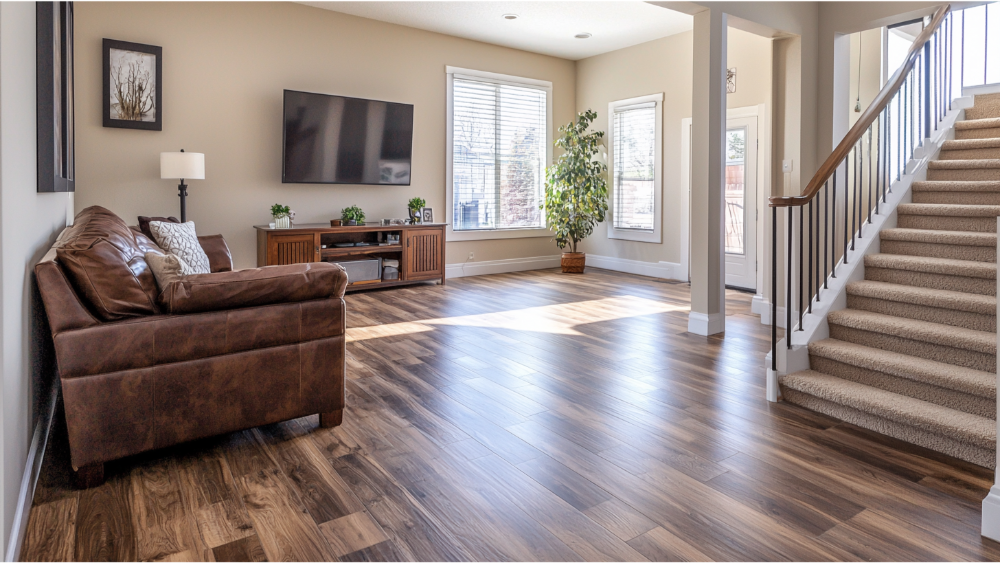
Durable and Designed to Withstand Moisture
Waterproof laminate flooring is crafted with specialized materials that make it impervious to water penetration, ensuring sturdiness in high-moisture areas like bathrooms and kitchens. Its construction also makes it resistant to warping or swelling, problems commonly associated with other flooring types. This durability allows it to maintain its appearance and functionality even in challenging environments.
Aesthetic Appeal Similar to Natural Wood
Modern waterproof laminate flooring is designed to mimic the beauty and texture of natural wood. It offers a wide variety of finishes and patterns that emulate different wood species, providing the warmth and sophistication of hardwood at a more affordable price. Despite being an engineered product, it blends seamlessly into spaces where authentic wood might not be practical.
Affordable Alternative to Traditional Hardwood
Compared to solid hardwood, waterproof laminate flooring is a budget-friendly option that still achieves a high-end look. Its ease of installation further reduces costs, making it suitable for homeowners looking to save money without compromising style. Additionally, it eliminates the risk of damage from water exposure, which is a common concern with traditional hardwood types.
Totally Waterproof Technology for Peace of Mind
With its impermeable core and protective outer layers, waterproof laminate is equipped to handle even standing water. This makes it a safe choice for households with pets, children, or frequent spills. Unlike water-resistant alternatives, it provides true waterproof protection, ensuring long-lasting performance.
Cons of Waterproof Laminate Flooring
Lacks the Authentic Feel of Natural Wood
Despite closely resembling real wood in appearance, waterproof laminate cannot replicate the tactile texture of authentic hardwood. Its synthetic nature becomes noticeable to touch, which might not appeal to purists. For some homeowners, the lack of “live wood” warmth can be a disadvantage.
Not as Long-Lasting as Traditional Hardwood
While waterproof laminate is highly durable, it doesn’t usually match the decades-long lifespan of solid hardwood. Over time, its surface layer may show signs of wear, requiring eventual replacement. Traditional hardwood, by contrast, is better suited for refinishing and restoration to maintain its timeless elegance.
Higher Cost Than Non-Waterproof Laminate
Waterproof laminate comes at a higher price point compared to standard laminate flooring due to its advanced technology. This upfront cost might be a barrier for homeowners working within a tight budget. However, the durability and protection against water damage often justify the initial investment.
Totally Waterproof, Yet Sensitive to Installation Quality
Achieving its full waterproof potential depends heavily on proper installation techniques. If planks are not securely locked together or if the underlayment is improperly placed, moisture could still penetrate. This means added reliance on professional installation or careful DIY efforts to maximize its performance.
Frequently Asked Is Laminate Floor Waterproof Questions
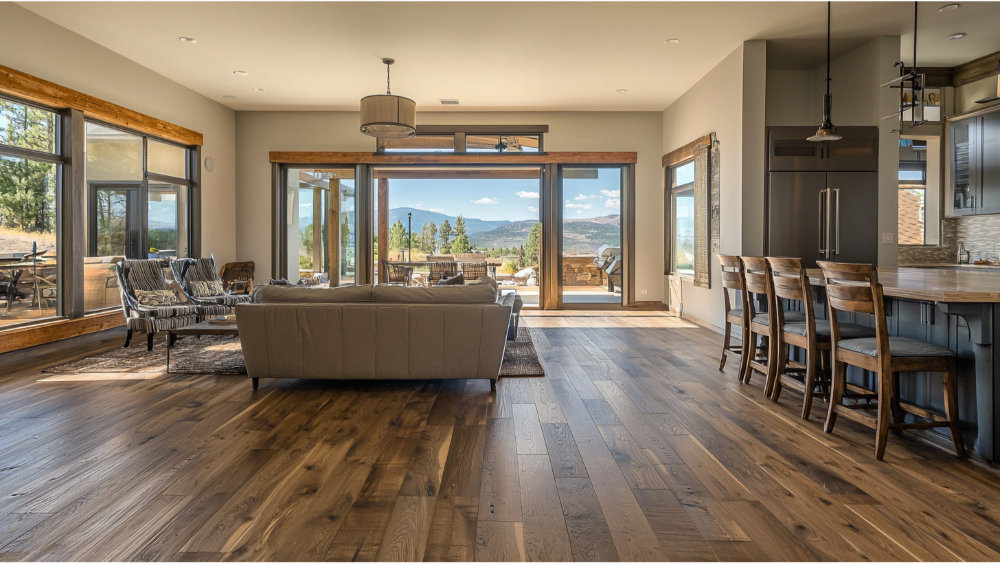
What Happens if Laminate Flooring Gets Wet?
If laminate flooring gets wet and the moisture is not addressed quickly, it can seep into the seams and cause the planks to swell or warp. Prolonged exposure to water may lead to irreversible damage, such as bubbling or separating of the top layer. This highlights the importance of cleaning up spills immediately and taking precautions to prevent standing water.
Is Any Laminate Flooring Really Waterproof?
Yes, some laminate flooring options are specifically designed to be completely waterproof, thanks to advancements in core materials and protective coatings. Unlike standard laminate, these types are built to resist moisture penetration, even from standing water. However, proper installation and maintenance are crucial to ensure their waterproof performance over time.
Can You Mop Laminate Flooring?
Yes, you can mop laminate flooring, but it’s essential to use a damp, not soaking wet, mop to avoid excess water exposure. Too much moisture can seep into the seams and cause swelling or warping of the planks. For best results, use a laminate-safe cleaner and thoroughly wring out the mop before use.
Conclusion
Waterproof laminate flooring is an excellent option for homeowners seeking a combination of durability, style, and practicality. Its ability to withstand moisture and spills makes it ideal for high-traffic or water-prone areas like kitchens, bathrooms, and entryways. While it may lack the authentic feel and long lifespan of traditional hardwood, its affordability, aesthetic appeal, and advanced waterproof technology offer an attractive alternative. By considering proper installation and maintenance, you can ensure that your waterproof laminate flooring remains a reliable and stylish solution for years to come.


